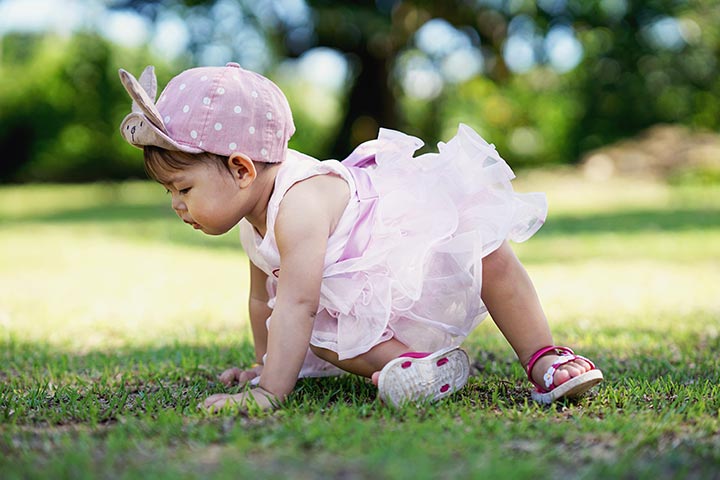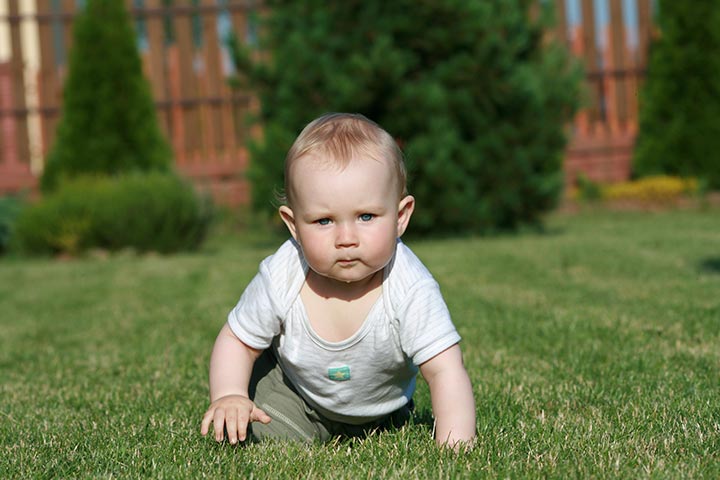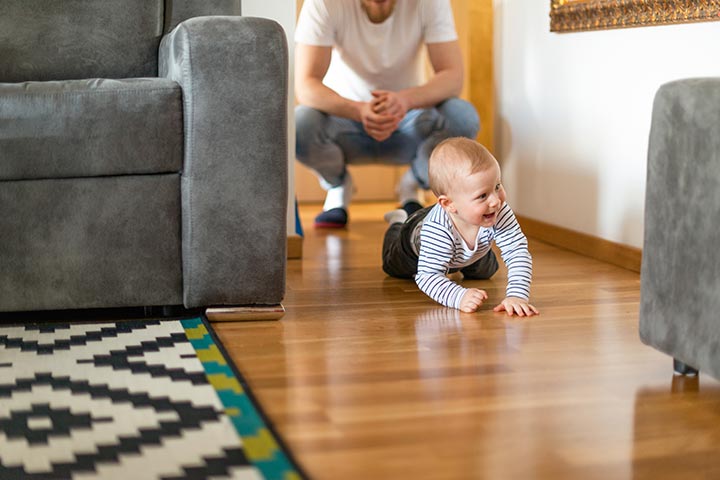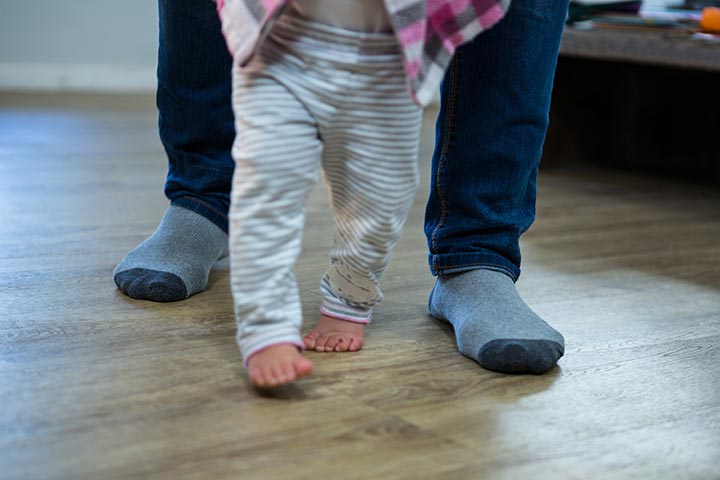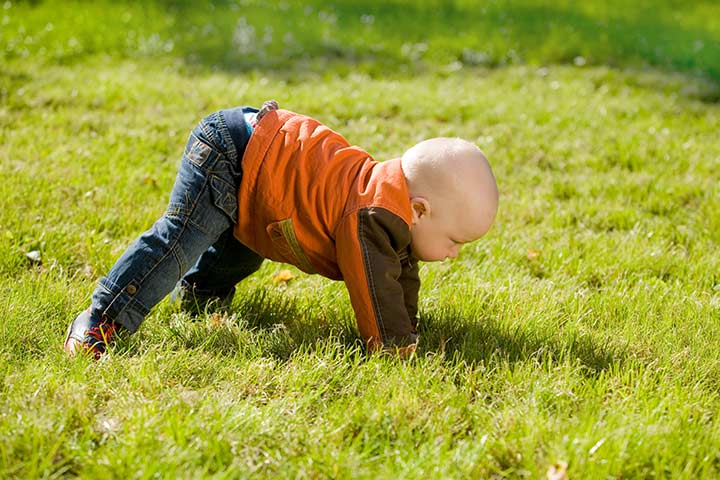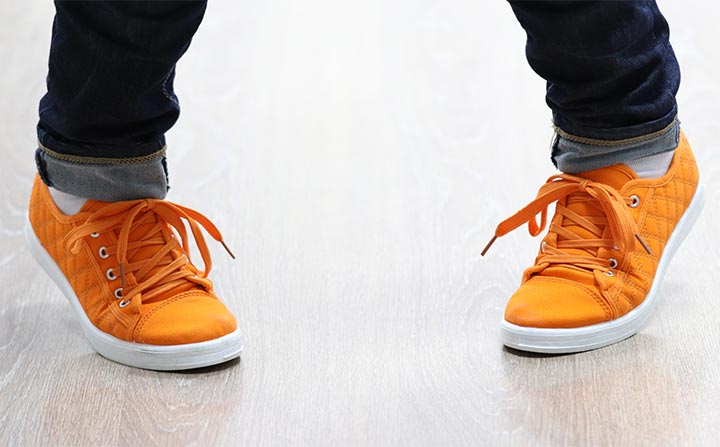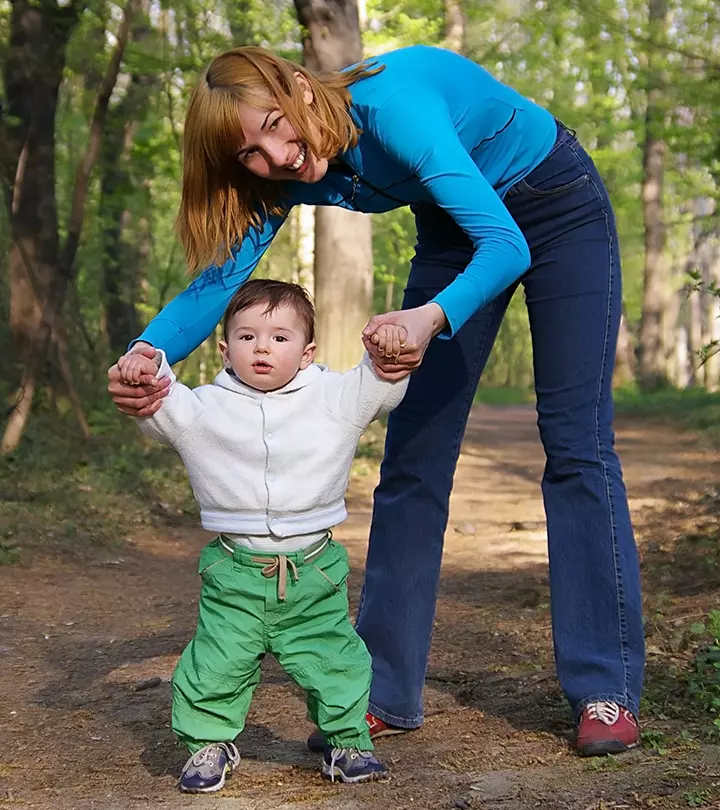
Image: Shutterstock
When a baby arrives in your life, everything revolves around their well-being. It is extremely important for parents to keep up with their baby’s vaccination appointments and track their growth milestones. One of the most-awaited growth milestones for most parents is when their baby starts walking. By the time your baby is a year old, he/she should be able to pull up and stand by holding on to something. Your baby should be able to walk around holding on to furniture or walls, also known as cruising. They might even take a few steps without support (1). But if your baby is already one and isn’t doing all these, here are a few normal reasons for it:
Normal Reasons
Ill-Fitting Shoes
You might not have given this a thought, but the kind of shoes your baby wears could contribute to how well they walk. Buy baby shoes that are lightweight as heavy shoes can make it difficult for your little angel to lift their tiny legs. Also, babies cannot tell if a particular shoe is tight for them. One thing you could do is go for a size slightly bigger than those meant for a one-year-old baby.
Baby’s Personality
Some babies are born active, at times hyperactive too. Yet, there are babies who demonstrate a laid-back personality from the very beginning. If your baby has a laid-back personality, they might not want to put in a lot of effort trying to master the art of walking. They’ll achieve it at their own pace.
Other Milestone Achievements
The pace at which your baby achieves other growth milestones can also act as an indication toward when they will start walking. If other growth milestones like crawling or starting on solid foods came in late, so it will be with walking too.
Too Many Obstacles In The Path
At times, something as simple as obstacles in the pathway might discourage babies from making an effort to walk. You might have a lot of furniture pieces in your living room and pathways. And if you thought they could well serve as a support to your baby, it could also be otherwise. Your baby might view them as an obstacle that can hurt them if they bump into it. Try removing them from the baby’s path and observe if your baby is willing to try walking.
Lack Of Practice
Practice makes you perfect. And this theory holds true for babies as well. The more your baby attempts to walk, the better they get at it. So, help your baby get more walking practice by removing obstacles in the pathway. Thus, creating the right, and safe, environment for walking.
Cause For Concern
Some of the reasons mentioned above are quite common and not a cause of concern. However, if your baby is not walking for more than 18 months, you might want to check with your doctor for the exact reasons. Some of them could be as follows:
Bone Fracture
Once babies become toddlers, they are usually hyperactive. They run around, bump, or fall – all in a day’s play. Sometimes, they might even hurt themselves seriously or fracture their bones during one of their adventures. If your child has, indeed, fractured a bone or two in the legs, then it can hinder their progress in walking.
Rickets
Babies need a sufficient amount of exposure to sunlight as it is a good source of vitamin D. Vitamin D helps in the absorption of calcium. A lack of vitamin D can result in rickets (2). Rickets can cause thickening of ankles and knees. It can also result in bowed legs, making it painful for your child to walk (3).
Pigeon Toes
Pigeon toe is a condition where the child’s toes are pointed inwards. It is common among infants and toddlers. Usually, treatment is not required for this condition as most children outgrow it. Since this may take a while, it might hinder the child’s early attempts at walking normally (4).
We hope that this informative article proves helpful to you if your baby is soon to achieve this milestone of walking. As mentioned earlier, if your baby is not walking by the time they are 18 months old or refuses to try despite repeated attempts, do not hesitate to see a pediatrician.

